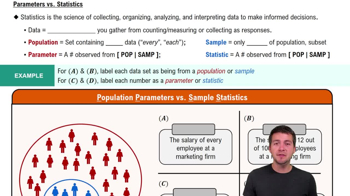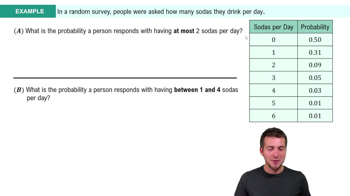Here are the essential concepts you must grasp in order to answer the question correctly.
Descriptive Statistics
Descriptive statistics involves summarizing and organizing data to describe its main features. This can include measures such as mean, median, mode, and standard deviation, as well as graphical representations like histograms and pie charts. The goal is to provide a clear overview of the data without making predictions or inferences about a larger population.
Recommended video:
Parameters vs. Statistics
Inferential Statistics
Inferential statistics allows researchers to make conclusions or inferences about a population based on a sample of data. This branch uses probability theory to estimate population parameters and test hypotheses. It is essential for determining whether observed patterns in the data are statistically significant or likely due to random chance.
Recommended video:
Parameters vs. Statistics
Survey Methodology
Survey methodology refers to the techniques and principles used to collect data through surveys. This includes designing questions, selecting a sample, and determining the mode of administration (e.g., online, face-to-face). Understanding survey methodology is crucial for interpreting the results accurately and ensuring that the data collected is reliable and valid.
Recommended video:
Intro to Random Variables & Probability Distributions Example 1
 Verified step by step guidance
Verified step by step guidance Verified video answer for a similar problem:
Verified video answer for a similar problem:



 2:13m
2:13m